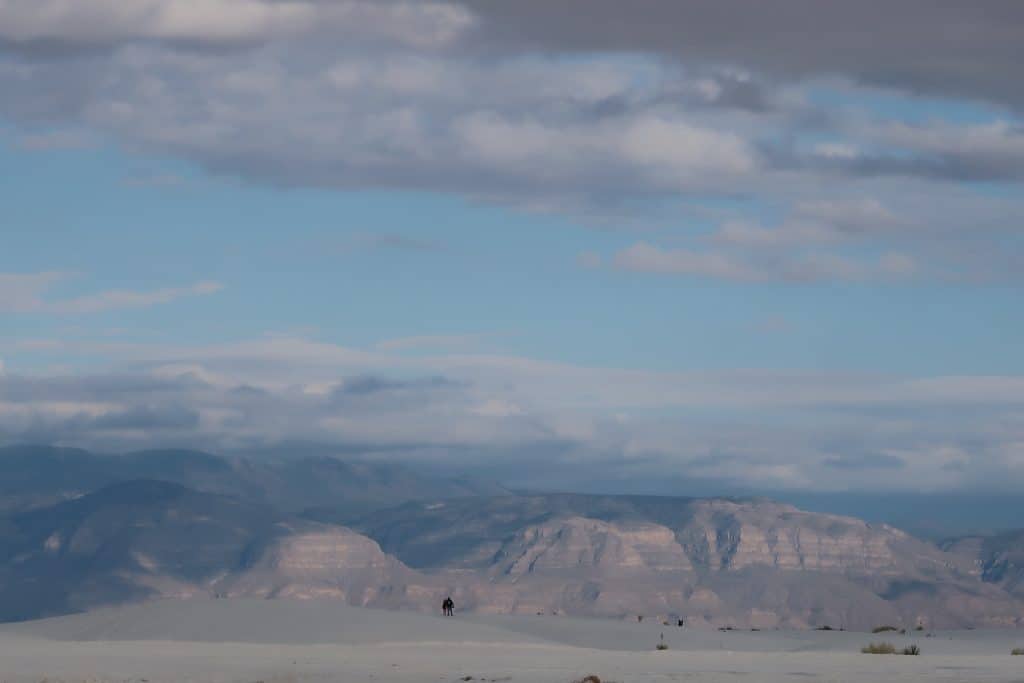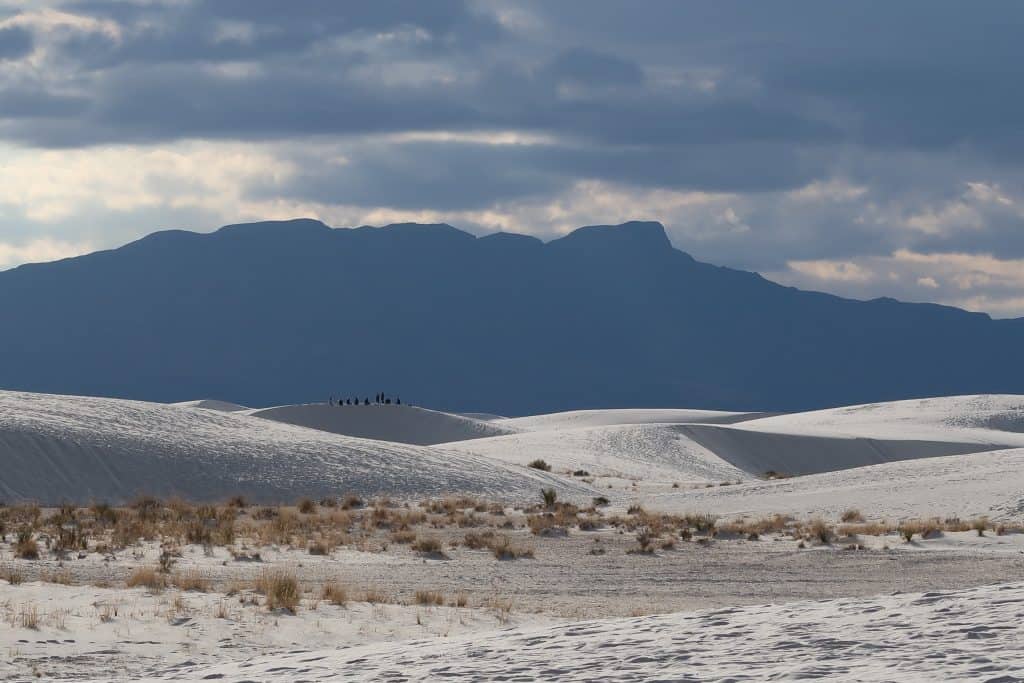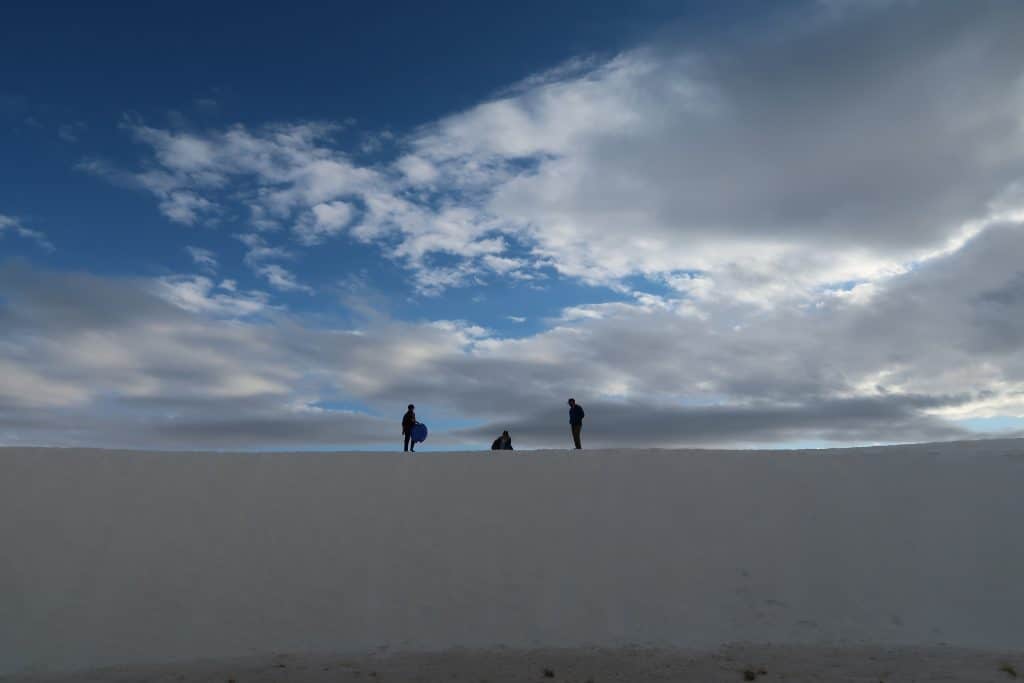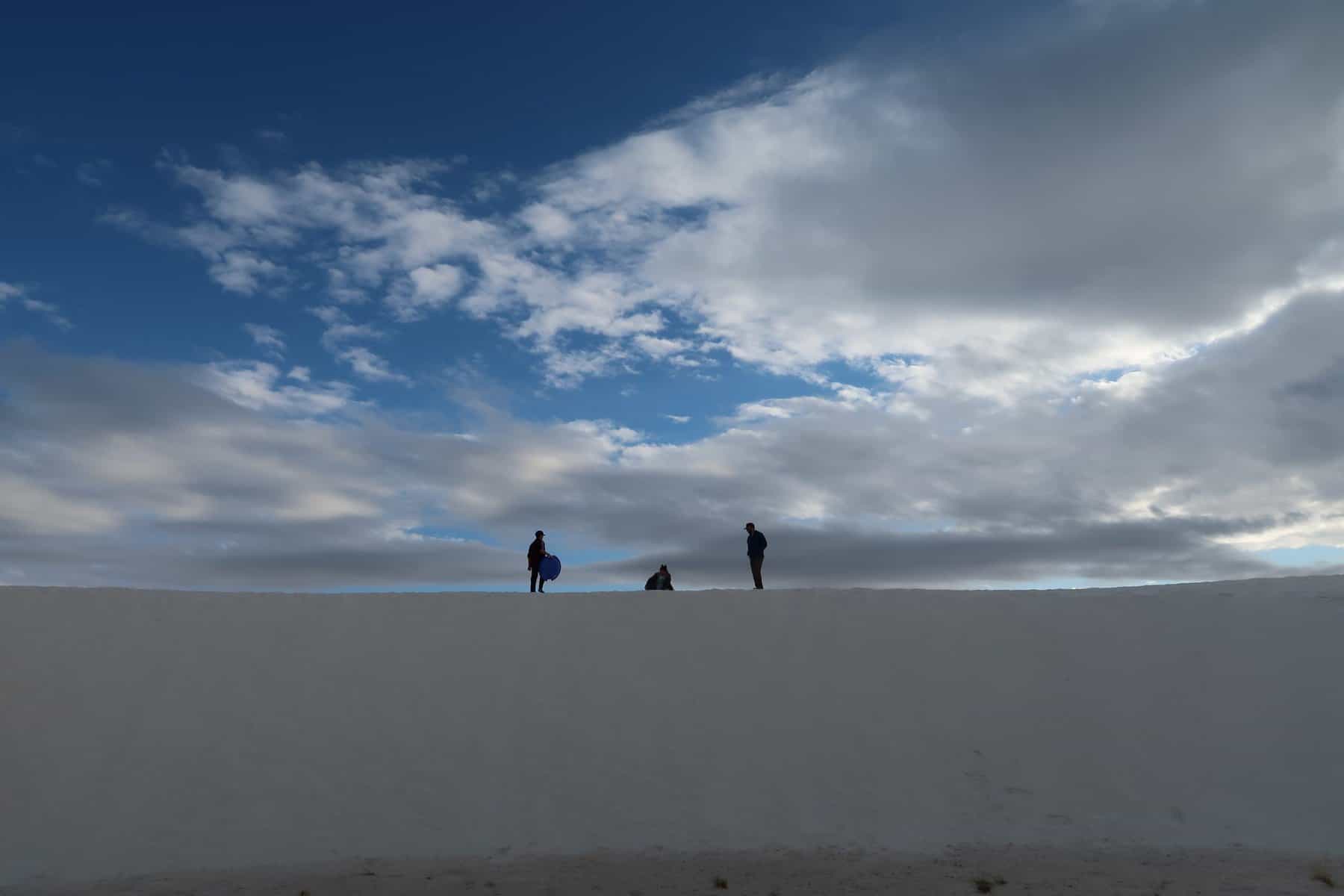White Sands National Park is a natural wonder that is unlike any other in the world. It boasts stunning white gypsum sand dunes that stretch over 275 square miles of the Tularosa Basin in southern New Mexico.
This basin is a large, low-lying area surrounded by two sets of mountains: the Organ Mountains to the east and the San Andres Mountains to the west. It is home to a number of significant geological and ecological features including the gypsum sand dunes of White Sands National Park, the Carrizozo Malpais lava flow, and the Alamogordo fault. It is an important region for scientific research and conservation efforts.
This unique landscape is a result of millions of years of geological processes that continue to shape the area to this day.

Geological History
The history of White Sands National Park dates back over 280 million years ago to the Permian Period. At the time it was covered by a shallow sea. Layers of gypsum began to form on the sea floor. Eventually, the sea retreated, and the gypsum layers were left exposed to the elements.
About 10,000 years ago, the last ice age came to an end, and the climate of the area began to change. The mountains surrounding the Tularosa Basin began to weather. Erosion and water runoff carried gypsum deposits into the basin. The combination of the gypsum deposits and the wind caused the formation of the white sand dunes that we see today.
Formation of the Dunes

The sand dunes of White Sands National Park are not made of typical sand. Instead, they are made of fine gypsum crystals that have been weathered and eroded by the wind. Gypsum is soft and soluble. Itis easily broken down and carried away by the wind or water.
The wind is the primary force that shapes the gypsum sand dunes. The wind blows the sand grains up the windward side of the dune and drops them down the leeward side.
The prevailing winds in the area are from the southwest, which means that the dunes tend to migrate in a northeasterly direction. However, the movement of the dunes are influenced by a variety of factors such as the strength and direction of the wind, the moisture content of the sand, and the presence of vegetation.
The rate at which the dunes migrate can vary greatly from year to year. In some years, the dunes may move several feet or even yards, while in other years they may only move a few inches. According to the National Park Service, the average rate of dune migration at White Sands is approximately 30 feet per year.
One of the most fascinating things about the dunes at White Sands is that they are not just moving in one direction. The dunes are constantly shifting and changing shape, as the sand is pushed and pulled by the wind. This means that the dunes can move in different directions depending on the prevailing winds at any given time.
In addition to natural forces, human activity can also impact the migration of the dunes at White Sands. For example, the construction of roads and other infrastructure can disrupt the natural flow of sand and alter the movement of the dunes.
Overall, the dunes at White Sands National Park are a dynamic and ever-changing landscape. The constant movement of the sand ensures that the dunes will always be an awe-inspiring sight for visitors to the park.
Preservation of the Dunes
Preserving the delicate ecosystem of the white sand dunes is a top priority for White Sands National Park. The gypsum sand dunes are fragile. Even small disturbances can cause significant damage. The National Park Service has implemented a number of conservation measures to protect the dunes and ensure their long-term survival.
Designated Recreational Areas
One of the most effective measures is the implementation of a designated area for recreational activities. Visitors are encouraged to stay within the designated areas to minimize the impact on the dunes.
Vehicle Restrictions
Another important conservation measure at White Sands is the restriction of vehicle access to certain areas of the park. This helps to reduce the impact of human activity on the delicate ecosystem. It also protects the fragile vegetation that grows on the dunes. Additionally, visitors are encouraged to stay on designated trails to avoid disrupting the natural flow of the dunes.
Management of Invasive Species
Another important conservation effort at White Sands is the removal of invasive species. Non-native plants and animals can disrupt the ecosystem and threaten the survival of native species. The National Park Service regularly monitors the park for invasive species and takes action to remove them before they can cause harm to the dunes.
One example of an invasive species at White Sands is the Russian thistle, also known as tumbleweed. This plant can grow quickly and spread rapidly. It takes over large areas of the dunes and reduces the available habitat for native plant and animal species.
Erosion Management
The National Park Service also works to protect the dunes from erosion. One way this is done is through the planting of vegetation. Grasses and other plants help to stabilize the sand and prevent erosion caused by wind and rain. The National Park Service also uses fences to protect the dunes from foot traffic and to prevent the sand from blowing away.
Public Education
Education and outreach are also important components of the conservation efforts at White Sands. The National Park Service provides visitors with information about the fragile ecosystem of the dunes and the importance of protecting it.
The conservation of the dunes at White Sands National Park is critical to the long-term survival of this unique ecosystem.

White Sands National Park is a geological wonder that is not to be missed. It is different from the dunes we find at many of our other national parks. The stunning, white, gypsum sand dunes are a result of millions of years of geological processes that continue to shape the area.
Visitors are encouraged to explore the beauty of White Sands National Park while respecting the park’s guidelines for preservation. We encourage you to visit this national park and to learn more through its Junior Ranger program and its visitor center exhibits.

